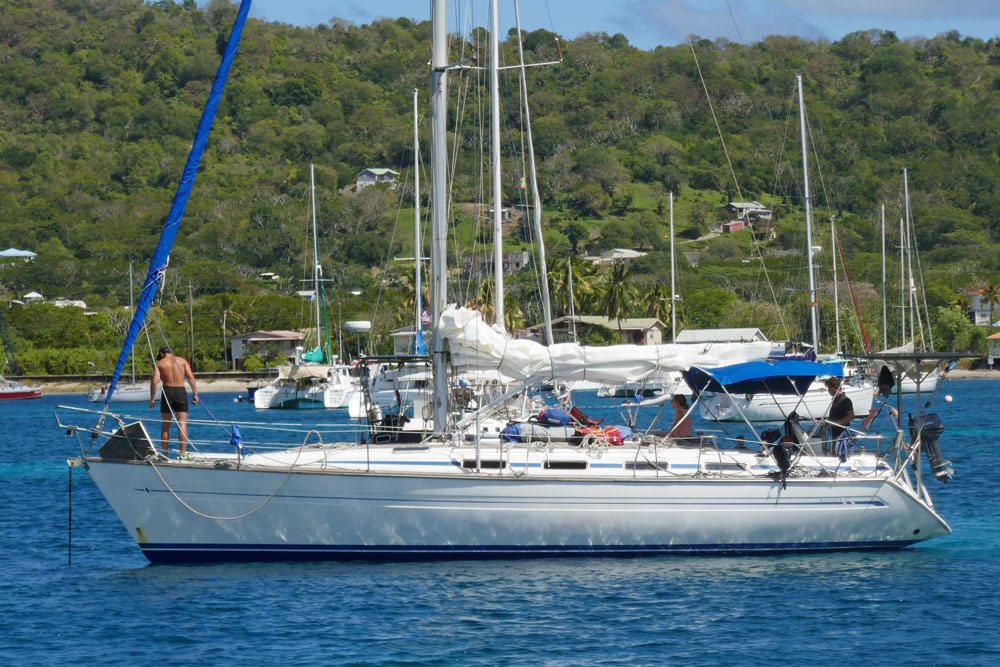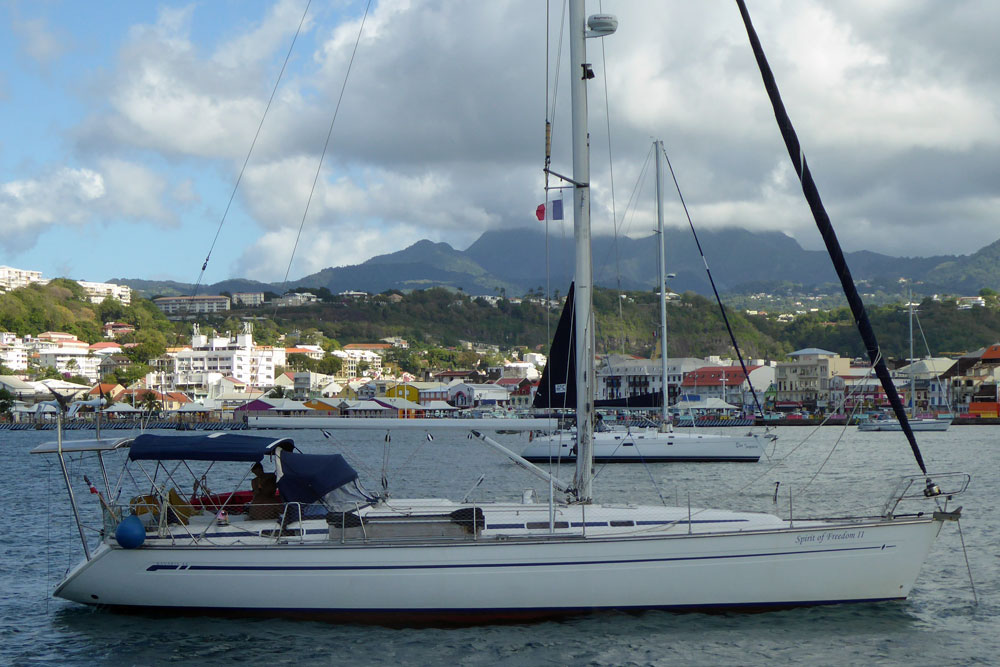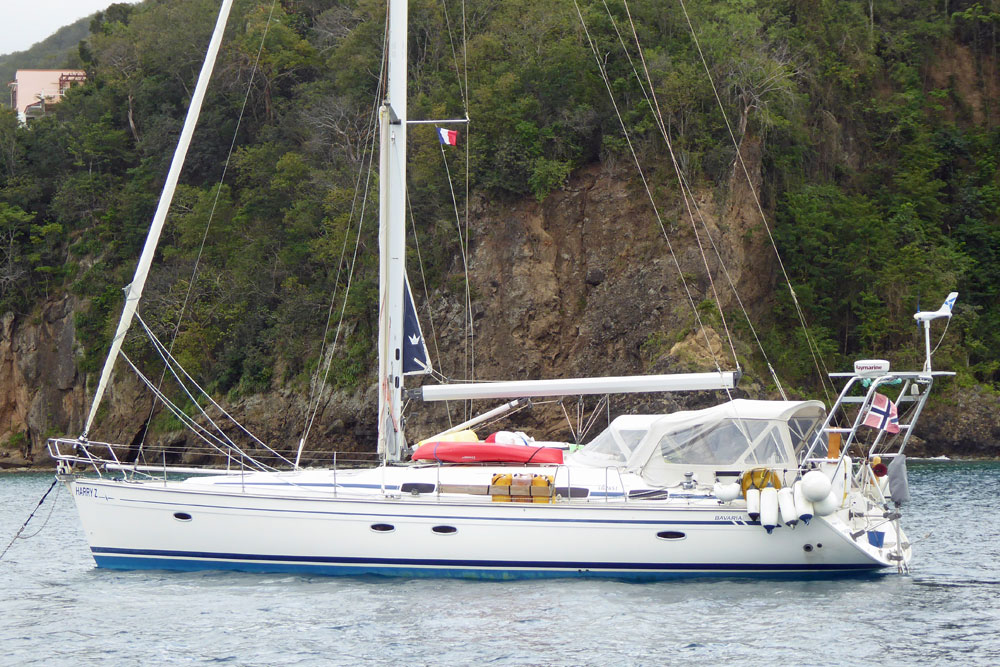- Home
- Cruising Yachts 45' to 50'
- Bavaria 46
The Bavaria 46 Cruiser
Specs & Key Performance Indicators
The Bavaria 46 Cruiser was designed by the Slovenian firm J&J Design and produced by Bavaria Yachts. Bavaria Yachts, headquartered in Giebelstadt, Germany, constructed this model from 2004 to 2014.
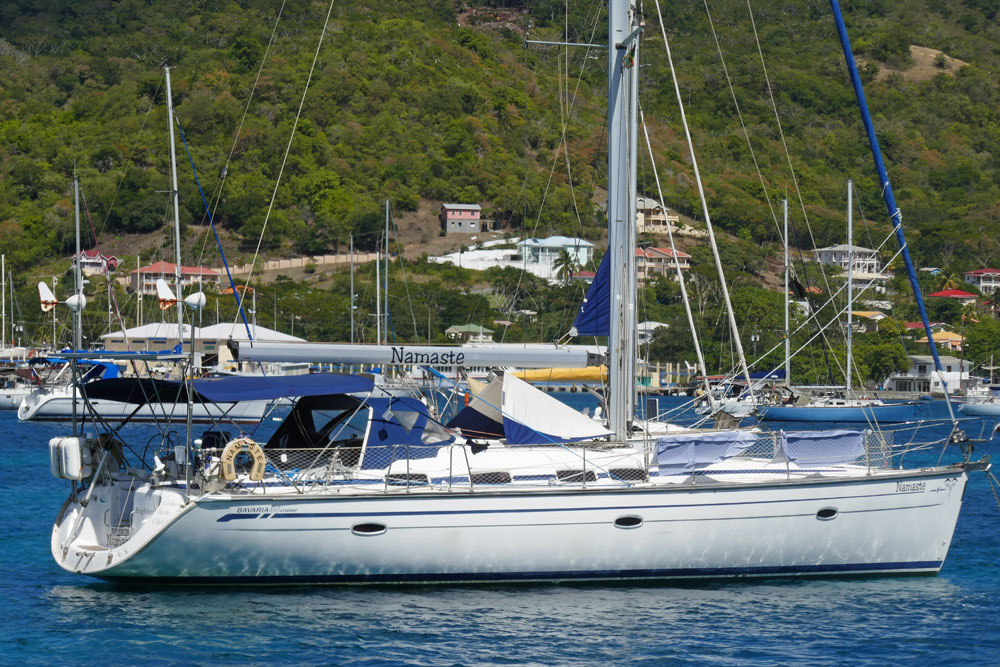 A Bavaria 46 Cruiser
A Bavaria 46 CruiserPublished Specification for the Bavaria 46 Cruiser
Keel & Rudder Configuration: Fin keel with spade rudder
Hull Material: Fiberglass (GRP)
Length Overall: 14.27 meters (46'10")
Length on Deck: 13.99 meters (45'11")
Waterline Length: 12.74 meters (41'10")
Beam: 4.35 meters (14'3")
Draft: 2.10 meters (6'11")
Rig Type: Fractional sloop
Displacement: 12,600 kilograms (27,778 pounds)
Ballast: 3,490 kilograms (7,694 pounds)
Water Tank Capacity: 360 liters (95 gallons)
Fuel Tank Capacity: 210 liters (55 gallons)
Hull Speed: Approximately 8.5 knots
Designer: J&J Design
Builder: Bavaria Yachts
Year First Built: 2004
Year Last Built: 2014
Number Built: Approximately 500 units
Options & Alternatives
Buyers of the Bavaria 46 Cruiser had a couple of design options to choose from:
- Draft: The Bavaria 46 Cruiser was available with two draft options: a standard deep draft of 2.10 meters (6'11") and a shallow draft option of 1.73 meters (5'9").
- Interior Layouts: Buyers could choose between different interior layouts, typically offering three or four cabins. The three-cabin layout provided more spacious living areas, while the four-cabin layout maximized sleeping capacity, making it suitable for larger crews or families.
There were several alternative versions available. These included:
- Bavaria 46 Cruiser (Standard): The original model with the standard features and specifications.
- Bavaria 46 Cruiser (Vision): A version with enhanced comfort and luxury features, often including upgraded interior finishes and additional amenities.
- Bavaria 46 Cruiser (Holiday): A version tailored for charter use, typically featuring a more robust and practical interior layout to withstand frequent use by different crews.
Later versions of the Bavaria 46 Cruiser were produced, including the Bavaria Cruiser 46 and the Bavaria C46. These are the essential differences:
- Bavaria Cruiser 46: This version, introduced around 2014, featured several upgrades from the original model. It offered more modern interior designs, improved sailing performance, and additional customization options. Notably, it included a flexible cabin layout where the forward master cabin could be converted into two smaller cabins.
- Bavaria C46: This version, introduced later, incorporated further advancements in design and technology. It featured a more contemporary aesthetic, enhanced sailing capabilities, and improved comfort. The C46 also had a higher sail area-to-displacement ratio, providing better performance under sail.
Sail Areas & Rig Dimensions
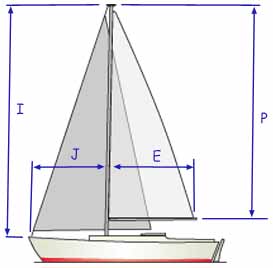
Sail Areas:
- Total Sail Area: 107.7 m² (1,159 ft²)
- Mainsail (standard): 56.0 m² (603 ft²)
- Mainsail (furling): 47.0 m² (506 ft²)
- Jib/Genoa: 51.7 m² (556 ft²)
- Gennaker: 148.4 m² (1,598 ft²)
Rig Dimensions:
- I: 18.00 meters (59'1")
- J: 5.51 meters (18'1")
- P: 17.19 meters (56'5")
- E: 5.55 meters (18'3")
Published Design Ratios
The Key Performance Indicators (KPIs)
Based on the published design ratios, the theoretical sailing characteristics of the Bavaria 46 Cruiser sailboat are:
- Sail Area/Displacement Ratio (16.7): This ratio is above 16, indicating that the Bavaria 46 Cruiser has reasonably good performance capabilities. It should be adequately powered to provide decent sailing performance and won't feel underpowered in typical sailing conditions.
- Ballast/Displacement Ratio (29.5%): With a Ballast/Displacement Ratio of 29.5%, the Bavaria 46 Cruiser isn't particularly stiff or powerful in standing up to the wind compared to boats with a higher ratio (e.g., 40% or more). It suggests that the boat should perform well in moderate conditions but may need to reduce sail area sooner in strong winds to maintain stability.
- Displacement/Length Ratio (166): This places the boat in the "Light Displacement" category (100-200). Boats in this category tend to be more easily driven to their design hull speed with less sail area, making them quicker and more responsive under sail compared to moderate or heavy displacement boats.
- Comfort Ratio (25.9): A Comfort Ratio of 25.9 indicates a motion typical of a coastal cruiser with moderate stability. This suggests that while the Bavaria 46 Cruiser will be comfortable for coastal cruising and typical family use, it might not be as comfortable in extremely rough seas as boats with higher comfort ratios designed for bluewater passage-making.
- Capsize Screening Formula (2.0): With a Capsize Screening Formula of 2.0, the Bavaria 46 Cruiser meets the threshold indicating it is suitable for ocean passages. However, it's right at the borderline, so while it is acceptable for bluewater sailing, it might not be as safe or comfortable in very heavy offshore conditions compared to boats with a lower capsize screening result.
Summary: The Bavaria 46 Cruiser is a sailboat with decent performance characteristics, adequate for family or coastal cruising with a good balance of comfort and stability. While it is not as stiff as high-performance or racing-oriented designs, it provides a relatively comfortable ride in typical cruising conditions. It meets the capsize safety threshold for ocean passages but is better suited for less extreme bluewater conditions. Overall, it's a well-rounded coastal cruiser with the capability for longer voyages when desired.
Here's how to calculate the KPIs yourself - without having to wrestle with the mathematics...
Design Ratios: Notes of Caution...
- The Sail Area/Displacement Ratio (SA/D): This ratio provides an estimate of the sail power relative to the boat's weight, which can indicate potential speed in various wind conditions. But it doesn't account for the efficiency of the sail plan, the rigging, or the skill of the crew. Real-world performance can vary significantly based on these factors.
- The Ballast/Displacement Ratio (B/D): This ratio gives an idea of the boat's stability and stiffness, which is crucial for handling and safety. But it doesn't consider the distribution of the ballast or the hull shape, both of which can greatly affect stability. A high B/D ratio alone doesn't guarantee a stable boat if the ballast is poorly distributed.
- The Displacement/Length Ratio (D/L): This ratio helps predict the boat's speed potential and its behaviour in different sea conditions. But it doesn't account for the hull design or the boat's overall weight distribution. Two boats with the same D/L ratio can perform very differently if their hull shapes are different.
- The Comfort Ratio (CR): This ratio estimates the boat's motion comfort in a seaway, which is important for long passages. But it doesn't consider the boat's interior layout, which can also affect comfort. Additionally, personal tolerance to motion varies, so a boat that is comfortable for one person might not be for another.
- The Capsize Screening Formula (CSF): This formula assesses the likelihood of a boat capsizing in heavy seas, which is critical for offshore safety. But it doesn't take into account the boat's handling characteristics or the skill of the crew. A boat with a low CSF can still capsize if poorly handled in severe conditions.
General Limitations
- Static Nature: These ratios are static measurements and don't account for dynamic factors like wave action, wind gusts, or crew actions.
- Simplification: They simplify complex interactions into single numbers, which can be misleading. Real-world performance is influenced by a multitude of factors that these ratios can't fully capture.
- Context: The context in which the boat is used (e.g., coastal cruising vs. offshore racing) can greatly affect how these ratios should be interpreted.
In summary, while these ratios provide valuable insights into the theoretical performance characteristics of a sailboat, they should be used as part of a broader assessment that includes practical experience, sea trials, and expert advice.
Other sailboats in the Bavaria product range include:
Recent Articles
-
Modern Boat Electronics and the Latest Marine Instruments
Dec 20, 25 05:27 PM
Should sailboat instruments be linked to the latest boat electronics as a fully integrated system, or is it best to leave them as independent units? -
Hans Christian 43: Classic Bluewater Cruiser & Liveaboard Sailboat
Dec 10, 25 04:37 AM
Explore the Hans Christian 43: a legendary heavy-displacement, long-keel sailboat. Read our in-depth review of its specs, design ratios, and suitability for offshore cruising and living aboard. -
Planning Your Sailboat Liveaboard Lifestyle: An Ocean Sailor's Guide
Dec 06, 25 05:18 AM
Seasoned sailors share their methodical risk analysis for planning a secure Sailboat Liveaboard Lifestyle, covering financial, property, and relationship risks.
